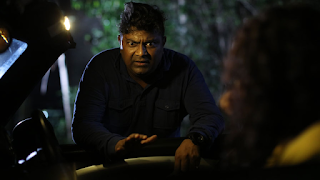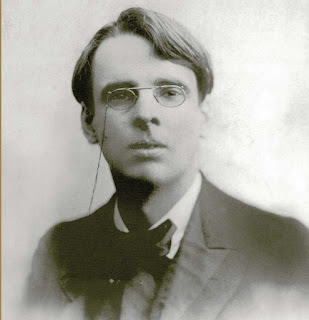Cinematography through the Bottom of the City: A Scrutiny of Urban Life in Mysskin’s Cinema
Each of the Mysskin films has come into the silver screen with innovative changes in Tamil film industry. Mysskin has admitted that Akira Kurosawa is the role model of him in the film industry. Even though his filming style is very similar to that of Akira Kurosawa, but his movies are reminiscent of Fyodor Dostoyevsky’s novels. Mysskin courageously portrayed the picture of dark urban life in his thriller movie which is unseen in other film directors or which is deliberately rejected by the others. Mysskin only noticed the turbulent visuals of dark urban life which no one noticed before. Mysskin used the nihilism and realism of Fyodor Dostoevsky and combined the melodrama in order to evoke emotions on the audience.
In the movies of Mysskin, we cannot see the stereotypical portrayal of city life by other writers including the visuals of big hotels, dance bars, Innovative vehicles, and luxurious life of rich people and so on. Instead of that, Mysskin portrayed the urban life in his movies are the life of blind people, beggars, prostitutes, the transgender who were segregated by the society as well as the people who are engaged in a journey for survival. There are a lot of nameless people who are busy in the battle against their own destiny. Mysskin does not dare to name them because of the universality of the characters. Mysskin brings back the urban life which is similar to urban life in the city of St. Petersburg appeared in most of the Dostoevsky novels. Each of the Mysskin movies is the documentary on urban life where murder, loot, rape, prostitution, and intoxication commonly took place.
Shanmugha Raja was so inspired by the character of Prince Myshkin in Fyodor Dostoevsky's The Idiot that when he started his movie profession, he chose to rechristen himself Mysskin. Mysskin is the sort of director who wishes to draw his final gasp between yells of 'Action!' and 'Cut!’. His movies are an impression of his genuine character. They're surly, sensational, idyllic, insubordinate and stylised in the meantime.
Pisasu (Ghost) isn't the run of the mill blood and guts movie in which the ghost needs to retaliate for its passing to accomplish freedom. The flat of Siddharth, an aspiring musician, is spooky by the ghost of a young lady he attempted to spare from a road accident. Pisasu is Siddharth's voyage to understanding the ghost's actual aims.
Nandalala (Lullaby) is a film is in sharp differentiation to whatever remains of Mysskin's filmography as far as substance and class. Enlivened from Takeshi Kitano's Kikujiro, it's the account of two characters looking for their moms – one is a desolate young man and the other a mentally challenged man on the run. Their impossible kinship and experiences make this an endearing film.
The world he depicts is barbarous with untoward accidents hiding around each corner and loaded up with cutthroat individuals who turn away as somebody seeps to death. In his reality you're in an ideal situation being visually impaired, yet there's definitely that one kind hearted individual who'll go to any degree to spare a real existence. Pisasu portrays the zenith of empathy and influences you to ponder quietly the brutality that is typically released on screen for the sake of vengeance. Truth is told, this tune offers a voice to the hidden string that integrates every one of his movies. It discusses dimness being dissipated by the fire of heart and God falling at the feet of the man
Onaayum Aattukkuttiyum (The Wolf and the Lamb) is about Chandru, a medical finds a man lying seeping out and about from a shot injury. Whenever emergency clinics and the police will not make a quick move, he carries the injured man home and endeavors a splenectomy to spare his life. The following day the man disappears and the police touch base to capture Chandru and his family, uncovering that the man he spared was a killer. Who precisely is the man Chandru saved? The end result for Chandru's life after this occurrence? This structure whatever remains of the film's plot. Together with Anjathe (Have no Fear) and Yuddham Sei (Wage a War), this film makes up Mysskin's wrongdoing set of three.
Onaayum Aattukkuttiyum was the magnum opus of Mysskin which was a spine chiller in Tamil film industry, released in 2013. Famous reviewer Sudhish Kamath wrote about the movie;
Onaayum Aattukkuttiyum is a dark fable, the kind you shouldn’t probably tell children but trust Mysskin to give the kid a reality check, when he’s supposedly reuniting the family in a cemetery of all places. Not only is it a morbid tale about morels and redemption, it’s also a bleak, cynical look at a world run by a pack of wolves, on that’s cruel to the innocents. (Kamath)
The movie is based on a conflict between cruelty and innocence. The attempts for survival by the characters make the movie very interesting without any lag. Mysskin tries to see through the eyes of his camera, the poor middle and lower class living on the bottom of the city. It consist their art, music, love, tears and so on. The most striking thing is the indifference, helplessness, and emptiness on the face, which we can see throughout the movie. They have a fit of terrible anger and protest against life and the way has turned into darkness as well as the system that surrounded them. But it never comes out of them as shouting or blazing, but each of the eyeglasses on their face speaks silently for them. The innocent lamb, the fraudulent wolf, and the one who sell the body in the street for livelihood are in a battle for survival at the same city. The film makes it an absolutely different movie experience because of how they accept their loss in the battle for survival. The high lightening factor is that the middle and lower class people only come to the frame of Mysskin’s urban life. In the presentation of these scenes, we can see the theme of blindness acts as a sharp symbol. The blindness in their eyes symbolizes darkness in their lives and minds.
In 2014, Mysskin reincarnated the visuals of similar urban life in his horror thriller movie Pisasu. The movie is about a violinist experiences paranormal experience in his house after the death of a girl who is trying to save to accident. Later he realizes that actually the spirit is helping him and he tries to find out who killed the girl by accident. The movie begins with the death of a car accident which is normal in urban life. There is a heart touching scene in the movie which is made in the setting of a subway near to railway station. A few blind beggars are earning a livelihood on both sides of the subway. The light reflected on the movie screen in these scenes reflects the nullity of their lives. The sad song of a young girl with heart touching music of violin played by the protagonist becomes the soul of the entire movie. Blindness reappears again as a powerful symbol in the movie Pisasu. We can see that Mysskin turns his camera from the mainstream view of the city into the life of the bottom of the city. These visuals do not have much connection with the plot of the Pisasu, but even though these dark images make the film sharp and intensive. Within the film, there is something to note in the portrayal of the background of the subway. We cannot consider the subway as a mere background of these scenes. Mysskin’s ability to transform the subway as a character in the movie proves his filming brilliance. Mysskin tries to convey the narrowness of the life of those marginalized beggar community in an expanded urban life through the image of the subway. As of all these scenes, the entire city reduced into the subway. When the mainstream community passes through the subway, we can see a marginalized community lenient for their kindness on both sides of the path. Some of them pass the poor people and their wounded music without any regard. And some of them show their support towards the blind beggars by giving small coins. We can also see that the same indifference and helplessness that has been seen on the face of people in Mysskin’s masterpiece movie Onaayum Aattukkuttiyum.
If we consider the urban visuals seen by Mysskin beyond a movie watching experience we can feel the ultimate reality of city life in it. If there is a possibility of criticism for Mysskin’s use of surrealism and melodrama which exaggerate the reality, but we can say that Mysskin never crosses the line of control. The official statistics of the number of people living in the subway and slums of the Chennai city reaffirms the above arguments. Those people are highly marginalized community by the mainstream society without primary living infrastructures and primary government documents like Adhar card. Nobody makes an attempt to portray their life like this before. It is certain that they never enjoyed social equality and social justice. Mysskin calls the mainstream society to play the violin for their song if we cannot do for more that helpless community.
Mysskin’s intentions to forget the happy moments of their life have to be criticized because all of his thriller movies including Onaayum Aattukkuttiyum, Pisasu, and Yuddham Sei are approaching its audience in a pessimistic perspective. We can feel that Mysskin deliberately ignore the philosophy ‘there is no rich who doesn’t weep once and there is no poor who doesn’t smile once’. It may raise some criticism by cultural and social theorists against Mysskin for the stereotypical representation of the bottom level of the city by depicting the crimes and anarchy, so we cannot easily object this argument. As humble worship of Fyodor Dostoyevsky, Mysskin also inspired Nihilism it transformed him from Shanmugha Raja to Director Mysskin.
Originally Published by: Midhulaj P and Shabna MP
P, M., & M P, S. (2019). Cinematography through the Bottom of the City: A Scrutiny of Urban Life in Mysskin’s Cinema. SMART MOVES JOURNAL IJELLH, 7(3), 8. Retrieved from https://ijellh.com/OJS/index.php/OJS/article/view/7354


Comments
Post a Comment